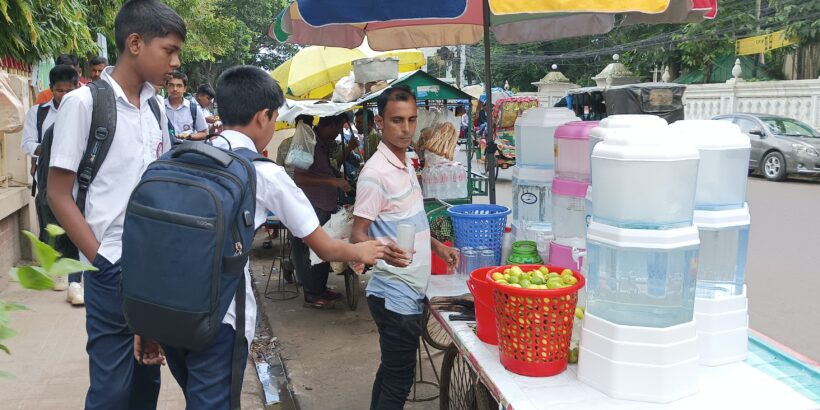Waterborne diseases like typhoid continue to be a major cause of illness and mortality globally. Typhoid risk increases as climate change affects global temperatures and extreme weather patterns intensify.
Data show that certain pathogens grow and spread more efficiently in environments with high temperatures: a seasonal analysis conducted in Bangladesh showed that the risk of typhoid is high during the warmer monsoon season. Studies conducted in other countries like Indonesia and Malawi found that hot temperatures and precipitation play a role in the breeding of Salmonella typhi bacterium. Extreme weather events such as cyclones in Mozambique in 2019 and floods in Pakistan in 2022 brought humanitarian disasters and subsequent spikes in typhoid cases. Fiji has seen typhoid cases rise in regions that suffer river or stream flooding. Thus, the risk of typhoid stands to rise as climate change has an increasingly negative impact on global temperatures and weather patterns.
The impact of El Niño
The International Federation of Red Cross and Red Crescent Societies announced that Asia and the Pacific region are going to fall subject to various climate-related events – floods, cyclones, and dengue among them, due to a cycle of warming weather events named El Niño and climate change. Several South Asian countries, including Bangladesh, recently endured an unusual spell of record-breaking hot weather from April to July, with temperatures as high as forty degrees Celsius (104 degrees Fahrenheit). The intense heat brought negative health consequences for many Bangladeshis, who are now suffering from fever and diarrheal disease. The rains increased during the first week of August, bringing high humidity and high heat indexes. Along with increased rainfall, which can overwhelm water sources and open sewage systems, the hot and wet weather has caused a rapid spread of dengue fever, creating a double burden of increased waterborne and vector-borne diseases.
Children are negatively impacted by extreme weather
Adverse weather conditions can be dangerous for children who may seek relief from the exhaustive heat by consuming food and cold beverages from street vendors. However, too often, the beverages from street vendors are made from unsafe drinking water, which results in the spread of waterborne diseases like typhoid among school-aged children. Poor food handling and unsafe drinking water sources near schools increase the risk of contracting typhoid. This was the case in Kampala, Uganda, where data found that the cause of a typhoid outbreak was contaminated water and street beverages.
TCVs offer protection through climate related events
For resource-limited and typhoid-endemic countries, typhoid conjugate vaccines (TCVs) need to be considered for vulnerable populations–particularly children–along with improvements in water supply and sanitation (WASH). As WASH infrastructure requires huge investments, an effective TCV campaign offers more immediate impact. To eliminate typhoid, improvements in drinking water quality, sanitation, and hygiene are necessary alongside TCV for an integrated and sustained approach to typhoid prevention and control. Expanded use of TCVs through routine immunization in the near term allows children to remain healthy and stay in school even as countries confront intense weather extremes.
Cover photo: Schoolchildren can be affected by typhoid through the intake of beverages that may be contaminated with harmful bacteria, including typhoid. Credit: Maksudur Rahman, PATH.



